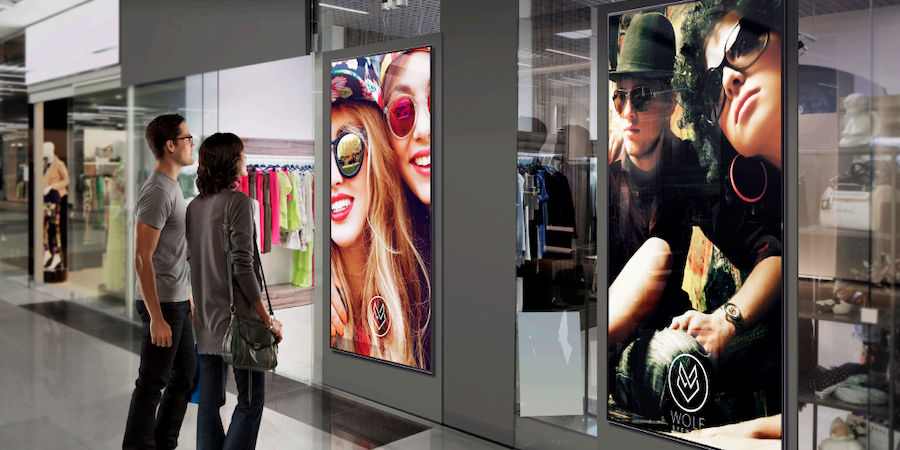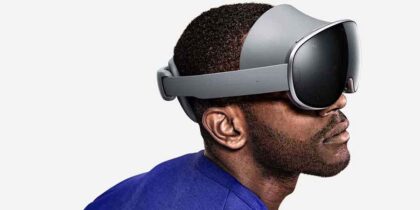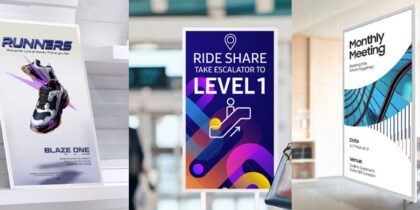Despite the love of online shopping due to its ease, convenience and the sheer variety of goods available, consumers still value the brick-and-mortar experience. When it comes to returns, for instance, many consumers prefer to visit a physical store instead of making returns through the mail. People also tend to spend more and prefer to buy certain items in-store. For example, more than 80% of U.S. consumers purchase household goods and groceries in person.
Next-generation retail stores will use innovative technology solutions that combine displays, social media, AI and more to create customer journeys that seamlessly integrate in-store and online shopping. Using Samsung displays paired with partner technologies, retailers can harness the power of digital signage to build customized shopping experiences that draw shoppers in and keep them coming back.
In-store retail experiences that mirror online shopping
Digital signage can bridge the gap between a brand’s online and in-store experiences. At Panico Salon in Ridgewood, New Jersey, for instance, a stylized customer journey starts before clients ever step through the door.
In keeping with Panico’s sleek, user-friendly website aesthetic, a Samsung OM55N-DS Dual Sided High Brightness Window Display faces out to the street utilizing the advertising ecosystem Samsung Ads to promote beauty and hair products. There’s also the Samsung Pro TV Terrace Edition that plays customized content such as fashion shows and cross-promotional ads as customers enter the premises via a scenic courtyard. Once inside the salon, sensors trigger welcome messages — which can be personalized to recognize special occasions such as a client’s birthday or graduation date — to appear on the front desk display.
In the retail area, FastSensor heat mapping data tells management exactly where customers linger, offering insight into where to place products to garner the most attention and maximize sales. Clients can shop via their phones through QR codes and Lift and Learn technology: Whenever items are picked up for examination, motion technology triggers an on-shelf display to show product details and a 30-second video about its benefits. Clients can also use tablets stationed around the salon to browse stylists’ individual lookbooks or pull up online images of a style they like.
At the end of a client’s appointment, stylists can snap a picture of their client’s finished look, send it to a wall-mounted display, and automatically add it to the salon’s website and social accounts. Payment can also be made via tablet, allowing guests to complete their transactions from the chair and breeze past reception with their new ‘do.
Hybrid shopping for a customized experience
Sixty-three percent of buying journeys begin online. Conversely, about half of shoppers who shop in-store first compare prices or specs online afterward.
Retailers can connect with customers via social media and leverage user-generated content (UGC) — content created by customers instead of a brand — to influence the customer journey. Customer relationship management (CRM) platform Sprinklr uses AI to identify a brand’s staunchest supporters, and then amplify their pro-brand posts via in-store displays. Research shows that shoppers trust UGC more than traditional or influencer marketing, and Business Wire reports that 79% of consumers say UGC highly impacts their purchasing decisions.
Another way to enhance the hybrid shopping experience is with interactive whiteboards or tablets on the retail floor. For years, digital-first mattress brand Saatva sold its luxury mattresses exclusively online, but in 2021, it opened its first Viewing Room in Manhattan where shoppers can take themselves on an immersive, self-guided journey.
The future of retail is digital
Get your free guide to growing your retail business by adopting future-proof ecommerce technology. Download Now
At the door, dual-sided Samsung OMN-D series displays greet customers with positive user testimonials, timely messaging or seasonal promotions. Additional displays throughout the space provide insight into how Saatva products are made and assembled and show images of their beds in scenic settings like a beach house and a mountain cabin. Thirteen-inch QBR displays located at each bed offer additional specs and features while shelf-installed displays share relevant product details, photos and videos of ancillary items like bedding and pillows. This, combined with FastSensor heat mapping, Samsung displays and an efficient, cloud-based content management system (CMS), empowers customers to take their time learning about and exploring Saatva products in a pressure-free way. Solutions like Samsung VXT, Samsung’s CMS, let retailers display their custom content, easily make remote updates, and manage it seamlessly across a variety of locations and devices from anywhere.
Leveraging in-store data collection and sensory-driven experiences
Understanding customer needs and preferences is critical for retailers, and to do this, they need data. Without data, it’s nearly impossible to market to the appropriate customers and send relevant messaging to the right people at the right time. With the knowledge of how to collect customer data in-store, brands can increase basket size and upsell more effectively with insightful, personalized offers.
The most tech-savvy retailers use technology to engage all the senses and create unforgettable shopping experiences. Using Internet of Things (IoT) sensors, intelligent displays, networked audio, physical security systems and more, Blueforce technology enhances customer experience while providing an additional layer of cyber-physical security, while HARMAN uses audio, lighting and even smell to create customized, sensory-engaging brand experiences.
Self-service technologies enhance the guest experience
Finally, Samsung partner technology helps businesses transact more sales faster with automated, self-service capabilities. Samsung Kiosk, for instance, lets customers search, reserve and checkout on their own in lieu of waiting in line for a cashier. Because employees can oversee several kiosks at once, customers can checkout faster, which increases satisfaction. And because customers have more time to peruse offerings and kiosks never forget the upsell, businesses can boost ROI when self-serve checkout technologies are implemented.
At Panico, handheld devices help the salon expand its e-commerce platform and drive retail sales. Clients can use the salon’s tablets to shop for hair care products, pay for services and schedule future appointments — right from their chair — then breeze past reception and on with their day.
Personalized journeys are the future of retail
A key to success in the retail environment is creating personalized, interactive, in-store retail experiences that seamlessly blend with online branding. From try-on to checkout, brands must captivate and inform customers with dynamic content at every touchpoint of the in-store journey. With the power of Samsung hardware and a diverse portfolio of software partners, businesses can build customized retail solutions that exceed customers’ expectations.
Sign up for a VXT free trial here. Find everything you need to know about choosing your store’s LED displays for optimal viewing in this free guide.









